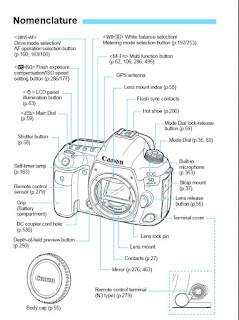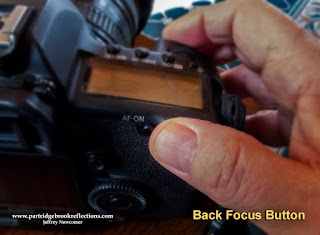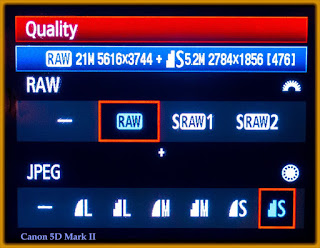 |
| Indian Pond : Canon 5D Mark IV : Nice Dynamic Range |
 |
| Sure is Pretty |
I have been
shooting with my trusty Canon 5D Mark 2 for about 7 years. Seven years is an eternity for digital
technology, but Canon has not been quick with innovation in there 5D
series. I decided not to upgrade when the
Mark 3 came out. I just didn’t feel that
the improvements were worth the increased in price. It was missing many of the features that I
was looking for as part of a truly innovative step forward. I thought that advanced features, such as
GPS, WiFi, intervalometer, increased image bracketing, a touch screen with an
articulated LCD screen, 7 fps, and 4k video would come quickly, but Canon had
stuck with the Mark 3 for years. Now
that the Mark 4 is finally out, with almost all these features and more,
I had to breathlessly take the leap.
 |
| Upward : Mark IV |
From my
early experience with this camera, I am very pleased. Compared to my Mark 2, the image quality is in
another world and the features meet most of what has been on my wish list. The one disappointment is that the
articulated LCD is missing. Given the ubiquitousness
of this feature, it seems an unnecessary omission, but I’m not here to
quibble. I’ll just glory in all the new
stuff I get to work with.
 |
Sunset Shore, Spofford NH
Canon 5D Mark IV |
It has been
awhile since I acquired a new high end camera, and I thought it would be a good
time to discuss a few key elements and functions with which to becoming
familiar in any a new camera.
Fortunately for me, when compared to my 5D Mark 2, the Mark 4 has a familiar
layout of controls. I don’t have to
retrain my muscle memory for many of the essential buttons and dials, but there
are still some basic steps required to become familiar with these remarkably
capable tools.
The Basics
As soon as
you open the box, before the new camera smell fades, and before you take a
single shot, there are a few basic steps to get your camera ready to go.
Batteries
Charge the battery and get a second battery to keep charged and ready in your
bag at all times. You should never risk
running out of juice in the middle of an important shoot. There are few electrical outlets in the forest.
Memory
Confirm that you have the right memory card and have extras. With bigger sensors, image files are getting
massive. Make sure that your cards have sufficient
capacity and that they are fast enough to keep up with the pace of your
shooting. Especially with 4k video, only
the fastest read speeds will serve.
Filters
Before I take my new camera out into the nasty, dusty, environment, I always
take measures to protect my lens. Sure,
new cameras always come with a lens cap, but it has been my experience that you
can’t capture many pictures with the cap on.
A simple clear, or UV filter, can provide an extra level of protection
 |
| Disaster Avoided |
when you are shooting, and I will often order the filter when I order the
camera. Some photographers question the
value of placing an additional piece of glass in front of your lovely expensive
lens, but for me, this simple protection has avoided disaster on numerousoccasions. It is shocking how expensive
these simple filters can be, but I never skimp on my filters. Don’t put a piece of cheap plastic in front
of your beautiful multi-coated, multi-element glass.
While we are
discussing filters, you might as well add a polarizing filter to your
order. It is THE one essential filter especially for landscape
photographers.
LCD Protection
You can choose to get a piece of plastic or glass to protect the LCD from
scratches and cracks. Just make sure
that your touch screen will work through the added layer, and that the screen
is clean before you apply the protector.
I never took this precaution on my Mark2 and, after seven years, I do
have a few scratches and even one small crack, but nothing that has affected
the camera’s function.
· Struggle with the Camera Strap:
Anything you can do to reduce the risk of dropping your precious baby is
definitely worth the effort. I like to
replace the corporate strap with one that is more comfortable, functional and
that doesn’t scream to the world that I am packing an expensive, mugger
attracting, camera.
· Camera Bag:
 |
| Bagophilia, a Common Affliction |
Do I need to say that you should protect your gear in a camera bag that is comfortable
to carry and provides easy access to your camera. I belong to a bag support group which helps
me deal with my pile of thirteen bags! Again it is a good Idea to look for a camera
bag that doesn’t LOOK like a camera bag.
· Add Your Camera to your Insurance
Whether you
have separate insurance for your photography business or add your camera
equipment to a rider on your household policy, you should not waste any time
getting your new camera listed, including the value and serial number. Stuff happens!
-----------------------------------------------------------------------------
Ok. I suppose you actually want to take pictures
with your lovely magic maker. There is a
lot to consider as you become acquainted.
Here are just a few suggestions, but it all comes down to, practice,
practice, practice.
Practice,
Practice, Practice
Make Lots of
Mistakes, Learn from them
and
Read the Damn Manual
 Most camera
manuals have “QUICK START” section which should get you going in a couple of
pages. Don’t expect to get through the
full manual in one sitting. My manual
for the Mark 4 is almost 700 pages long.
Most of it is a reference, not a novel and it will be solving my
insomnia for months to come.
Most camera
manuals have “QUICK START” section which should get you going in a couple of
pages. Don’t expect to get through the
full manual in one sitting. My manual
for the Mark 4 is almost 700 pages long.
Most of it is a reference, not a novel and it will be solving my
insomnia for months to come.
The first,
and the most obvious, point to make is that practice is essential in becoming
familiar with your camera’s controls. Experiment
with all of the settings and carefully review the results. Don’t take a new, untried, camera on an
important shoot. You don’t want all the
pictures from that critical family gathering to be hopelessly overexposed and
out of focus.
Foot Photography
 I always
suggest that you settle onto the couch, enjoy a glass of wine and try all the
setting while shooting pictures of your foot.
Fortunately, with digital cameras, the results can be immediately
reviewed and corrections made. Learn how
to figure out what went wrong by examining the details from each shot, not only
by reviewing the LCD screen, but also by studying the image’s EXIF Data. The EXIF data is embedded in each image and includes
a mass of information, including the f-stop and shutter speed, ISO and file
type. Eventually, you may not want all
the image data to show up on the screen after each shot, but while learning, it
is essential to have that immediate and specific feedback.
I always
suggest that you settle onto the couch, enjoy a glass of wine and try all the
setting while shooting pictures of your foot.
Fortunately, with digital cameras, the results can be immediately
reviewed and corrections made. Learn how
to figure out what went wrong by examining the details from each shot, not only
by reviewing the LCD screen, but also by studying the image’s EXIF Data. The EXIF data is embedded in each image and includes
a mass of information, including the f-stop and shutter speed, ISO and file
type. Eventually, you may not want all
the image data to show up on the screen after each shot, but while learning, it
is essential to have that immediate and specific feedback.
Start by
understanding the location and function of the essential controls.
Find the
Essential Controls:
Discover what is familiar and what is different from your previous camera. Even cameras from different manufacturers
tend to follow similar schemes. Find the labeled diagram with all the buttons
and dials. Only a few will be needed to
get you started. It all starts with the
shutter.

- Shutter(duh)
- Shooting modes
(Aperture & Shutter priority, manual),
- ISO
- Exposure
Adjustment
- Auto Focus
- Image Types
Once you
have found the essential controls it is time to start playing. Isolate the individual controls and experiment
with them one at a time. Resist the urge to run out and shoot randomly. I know the feeling, but you will get there
faster with a systematic approach.
Exposure
Control
 |
| Add caption |
Shooting
modes, Aperture and Shutter Priority, Manual, and ISO, all have their effect
on exposure, but they also have secondary effects. These include depth of field, motion capture,
sharpness, and noise, that are important to understand during the early exploration
of your camera’s features
Know the
Secondary Effect
Aperture Priority:
Depth of Field
 In aperture priority exposure is determined by the size of the opening. That is simple enough, but you should explore
the depth of field with various apertures.
DOF is dependent on the size of the aperture, but it is also affected by
the size sensor. For any f-stop, the DOF
is much greater on the tiny sensor of an iPhone than from the ‘full” size
sensor of many DSLRs.
In aperture priority exposure is determined by the size of the opening. That is simple enough, but you should explore
the depth of field with various apertures.
DOF is dependent on the size of the aperture, but it is also affected by
the size sensor. For any f-stop, the DOF
is much greater on the tiny sensor of an iPhone than from the ‘full” size
sensor of many DSLRs.
Shutter
Priority: Shake
 |
| Slow Shutter : Cotton Candy |
Shutter
speed directly controls the exposure, but it also affects your ability to
capture motion. The shutter speed’s impact on freezing or
blurring motion is obvious, but as you first explore your new camera your
question should be, “How fast does the shutter need to be to make it possible
to hand-hold a shot”. Most modern cameras
or lenses have some form of shake reduction and a bit of experimentation is
needed to determine how slow a shutter speed can be before some form of external
stabilization is required. Of course the
“shake limit” is not strictly related to the camera. It is also dependent on the focal length of
the lens, and the amount of coffee you have consumed. I’m not as stable as I used to be and I keep
my monopod or tripod close at hand.
ISO: Noise
Modern
cameras have remarkably sensitive sensors that can, with high ISO levels, shoot
in low light situations, but, with increased ISO, noise inevitably becomes aproblem. Again systematic
experimentation is necessary to determine how high the ISO can be pushed before
the noise becomes unacceptable to your eye.
Larger sensors tend to have less noise at high ISOs, but every camera is
different.
 |
| ISO Noise Test |
Automatic Exposure
Schemes
Most camera
have an array of choices for evaluating the amount of light reaching the sensor
and adjusting the exposure in response.
 Different
exposure patterns can be selected, including center weighted, spot or various
evaluative modes. It takes practice to understand how to select between them,
and which works best in different lighting situations. Evaluative might work well for generally even
lighting, while a center weighted mode will be better to deal with the
challenges of strong back-lighting.
Different
exposure patterns can be selected, including center weighted, spot or various
evaluative modes. It takes practice to understand how to select between them,
and which works best in different lighting situations. Evaluative might work well for generally even
lighting, while a center weighted mode will be better to deal with the
challenges of strong back-lighting.
Auto Focus:
 |
| 9 point auto Focus : Canon 5D Mark II |
Sharp focus is an essential part of capturing a great image, but it is not only
about seeing clearly. The location and
depth of clear focus can direct the eye to the important parts of an image and de-emphasize
the effect of distracting elements.
 |
| 63 focus points : canon 5D Mark IV |
Manual
focus is functionally simple, but often difficult to nail precisely, especially
when viewed through a small, dark viewfinder.
Live view can help zero in on focus, but the ability of auto focus to
find and lock on to precise focus is remarkable. It is a matter of knowing how to give enough
direction to the auto focus system so that it knows where you are looking.
 Learn how to
activate and hold auto-focus over the desired part of the image. Most cameras start with the “half press”
shutter approach to achieving focus, but you might eventually consider the
advantages of “back button focus”. This
typically requires a deep dive into the mysteries of your camera’s menus, but
you will find that it can be worth the effort.
Learn how to
activate and hold auto-focus over the desired part of the image. Most cameras start with the “half press”
shutter approach to achieving focus, but you might eventually consider the
advantages of “back button focus”. This
typically requires a deep dive into the mysteries of your camera’s menus, but
you will find that it can be worth the effort.
Image Types
 Images can
be recorded in a few different formats, typically Raw, JPG or both. If possible, RAW is generally the best choice
to capture the most amount of image data for eventual editing, but not all
camera can shoot in RAW.
Images can
be recorded in a few different formats, typically Raw, JPG or both. If possible, RAW is generally the best choice
to capture the most amount of image data for eventual editing, but not all
camera can shoot in RAW.
-----------------------------------------------------------------------------
Practice
That is a
very brief look at the first few pages of your massive manual. It should get you started on an exciting
exploration of the incredible capabilities of a modern digital camera. Don’t be intimidated. To paraphrase a
familiar quote, “ 99% of cameras are smarter than 10% of photographers”.
So just enjoy the journey, and take it page by page.
Jeff Newcomer, NEPG
partridgebrookreflections.com
603-363-8338

 This week I finally got back
out to Magical Monhegan. Monhegan is a
small island 12 nautical miles out from the coast and a world away from our 21st
century lives. The island is just 1.75
miles long and .75 miles wide with much of the “development” clustered around
the harbor on the east side. The single
dock hosts ferries from Port Clyde,
This week I finally got back
out to Magical Monhegan. Monhegan is a
small island 12 nautical miles out from the coast and a world away from our 21st
century lives. The island is just 1.75
miles long and .75 miles wide with much of the “development” clustered around
the harbor on the east side. The single
dock hosts ferries from Port Clyde,  New Harbor and Boothbay, and is protected
by the mostly uninhabited rocky island of Manana. Monhegan has artist galleries, a few guest
houses and a couple of seasonal hotels that have surprising good food, but it
is the island’s quiet solitude which is its essential feature. The western side is undeveloped and has tall
rocky cliffs facing out to the restless Atlantic rollers. It is reached only through a system of
meandering foot paths. It is a great place for painters, birders, poets and, of
course, photographers.
New Harbor and Boothbay, and is protected
by the mostly uninhabited rocky island of Manana. Monhegan has artist galleries, a few guest
houses and a couple of seasonal hotels that have surprising good food, but it
is the island’s quiet solitude which is its essential feature. The western side is undeveloped and has tall
rocky cliffs facing out to the restless Atlantic rollers. It is reached only through a system of
meandering foot paths. It is a great place for painters, birders, poets and, of
course, photographers. 












 Monhegan is a uniquely
magical part of the Maine coast. It is
definitely worth a trip. I will
definitely be back. I would love to
settle in for a relaxing week or two, but until Susan is ready to escape to
write her great American novel, I may have trouble getting her to dessert
civilization for that long. In the meantime,
I have work to do as I wade through the 700 images from this visit. Perhaps more pictures next week, but autumn
is coming! and I have to prepare for my Fall Foliage Workshop coming up on
October 14-16th.
Monhegan is a uniquely
magical part of the Maine coast. It is
definitely worth a trip. I will
definitely be back. I would love to
settle in for a relaxing week or two, but until Susan is ready to escape to
write her great American novel, I may have trouble getting her to dessert
civilization for that long. In the meantime,
I have work to do as I wade through the 700 images from this visit. Perhaps more pictures next week, but autumn
is coming! and I have to prepare for my Fall Foliage Workshop coming up on
October 14-16th.





































